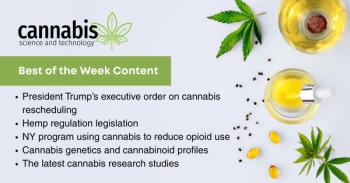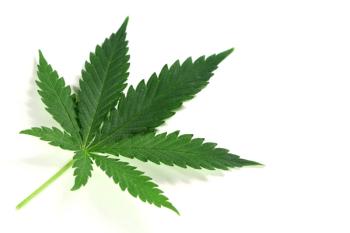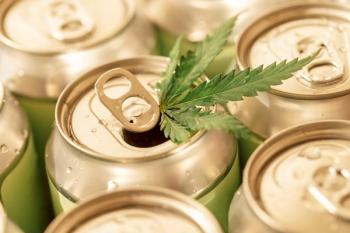
Cannabis Science and Technology
- September/October 2025
- Volume 8
- Issue 5
- Pages: 9-11
The Essence of Cannabis and the Compounds Behind It

Key Takeaways
- Terpenes, terpenoids, and volatile sulfur compounds define cannabis' flavor and aroma, influencing consumer preferences and physiological effects.
- The "entourage effect" posits that these compounds modulate cannabinoid activity, though evidence remains debated and under investigation.
Here, we explore the essence of cannabis flavor, which is defined by compounds like terpenes, terpenoids, and volatile sulfur compounds. These molecules shape the aroma and taste and also contribute to the plant's physiological effects through the "entourage effect." Advanced tools are used to analyze this complex chemical symphony.
Cannabinoids are the foundation of cannabis products and their physiological effects. Compounds such as terpenes, terpenoids, and sulfur compounds make up the essence of cannabis flavor. These flavor compounds are vital to the taste and aroma of cannabis products but also impact the physiological effects of cannabis. In this article, we will explore the many compounds that have been identified to make up the flavor of cannabis plants and extracts.
The Essence of Cannabis and the Compounds Behind It
Cannabis has always been defined as much by its aroma and flavor as by its psychoactive effects. From the pungent “skunky” scent of certain cultivars to the citrusy brightness of others, flavor compounds shape how consumers experience cannabis and often guide preferences as strongly as potency numbers on a label. But what exactly is responsible for these sensory profiles?
While cannabinoids like tetrahydrocannabinol (THC) and cannabidiol (CBD) dominate scientific and commercial conversations, they are only part of the story. A diverse set of molecules—including terpenes, terpenoids, and volatile sulfur compounds—form the aromatic and flavor “fingerprint” of each cultivar. These chemicals not only define the sensory essence of cannabis but also contribute to the plant’s physiological effects through synergistic mechanisms often described as the “entourage effect.”
This article explores the science of cannabis flavor, the classes of compounds involved, the analytical tools used to detect them, and the ongoing debate about how much they shape the overall cannabis experience.
Terpenes: The Classic Flavor Compounds
When most people think about cannabis aroma, they are thinking about terpenes. These small, volatile hydrocarbons are produced in the glandular trichomes of the plant—the same structures that synthesize cannabinoids. More than 200 different terpenes have been identified in cannabis, though typically only a handful dominate any given cultivar.
Key Cannabis Terpenes
Myrcene: The most abundant terpene in cannabis, myrcene imparts earthy, musky, and clove-like notes. It is also found in hops, thyme, and lemongrass. Some studies suggest it may contribute to the sedative “couch-lock” effect often associated with certain indica-type cultivars.
Limonene: Bright and citrusy, limonene gives many cultivars their lemon or orange notes. It has been studied for its potential anti-anxiety and mood-elevating properties.
Pinene: Smelling like pine needles, pinene exists in both α- and β- forms. Beyond its sharp forest aroma, it is thought to support alertness and memory retention.
Linalool: Floral and lavender-like, linalool contributes to relaxing, soothing profiles and is widely studied for its potential anxiolytic effects.
Caryophyllene: Spicy and peppery, β-caryophyllene is unique because it can bind to CB2 cannabinoid receptors, blurring the line between terpene and cannabinoid pharmacology.
Terpenes do more than please the nose. Preclinical research indicates that many possess anti-inflammatory, analgesic, or neuroprotective properties, though much of this evidence comes from animal or in vitro models rather than human clinical trials.
Terpenoids: Oxygenated Complexity
Closely related to terpenes, terpenoids are chemically modified derivatives that include additional functional groups like alcohols, aldehydes, or ketones. While they are less abundant than their parent compounds, terpenoids often add complexity to cannabis aroma.
For example, nerolidol contributes woody, herbal notes, while geraniol adds a rose-like floral dimension. These molecules are more chemically reactive than terpenes and can form through oxidation during curing, storage, or extraction. This helps explain why cannabis can “age” in flavor—an improperly stored flower may smell radically different from when it was first harvested.
Volatile Sulfur Compounds: The Skunky Signature
One of the most striking discoveries in cannabis flavor chemistry over the past decade is the identification of volatile sulfur compounds (VSCs). Long associated with skunks and garlic, these compounds were only recently confirmed as key players in cannabis aroma.
In 2021, researchers published evidence that a compound called 3-methyl-2-butene-1-thiol (MBT) is a primary contributor to the characteristic “skunk” smell of cannabis. This compound is nearly identical to the molecule responsible for the odor of skunk spray (1).
Processed products are rapidly gaining market share and seeking to recreate specific cannabis plant flavor profiles. There are companies pouring themselves into flavor profile research to meet this demand and be at the forefront of flavor profile development. One recent development has uncovered the potential sources for the “cheesy” cannabis flavor, 2-heptanone, octanoic acid (OA), and decanoic acid (DA) (1).
Other sulfur compounds, such as thiols, sulfides, and disulfides, provide layers of pungency that distinguish one cultivar from another. Interestingly, some of these compounds are structurally similar to those found in garlic and onions, plants with well-documented medicinal properties. This raises intriguing questions about whether sulfur compounds in cannabis also contribute to its therapeutic profile.
Flavonoids and Beyond: Subtle but Significant
While less studied, cannabis also produces a set of polyphenolic compounds known as flavonoids. These include cannflavins A, B, and C, which are unique to cannabis. Flavonoids are not as volatile as terpenes and thus do not strongly influence aroma, but they contribute to flavor and pigmentation. Cannflavins, for example, have been reported to possess strong anti-inflammatory effects—up to 30 times more potent than aspirin in certain assays (2).
In addition to flavonoids, minor volatile compounds such as esters, aldehydes, and ketones also appear in cannabis headspace analyses. These trace chemicals may not dominate, but they fine-tune the overall flavor balance, much like subtle background instruments in a symphony.
The Entourage Effect: Synergy in Action
A critical question in cannabis science is whether these compounds meaningfully alter the physiological effects of cannabinoids. The idea of the entourage effect—that terpenes and other molecules enhance or modulate cannabinoid activity—remains both popular and controversial.
Some researchers argue that evidence for the entourage effect is anecdotal or poorly controlled, while others point to mounting data suggesting that cannabis experiences cannot be explained by THC and CBD concentrations alone. For example, cultivars with nearly identical cannabinoid profiles can produce distinctly different effects, hinting at the role of aromatic compounds.
Clinical studies are still limited, but early data indicate that terpenes may interact with cannabinoid receptors or neurotransmitter systems (3). For instance, β-caryophyllene’s CB2 receptor binding is well-documented, and limonene has been shown to modulate serotonin signaling in animal models.
Tools of Discovery: Analyzing Cannabis Flavor
Unraveling the complexity of cannabis chemistry requires advanced analytical techniques. Gas chromatography–mass spectrometry (GC-MS) is the gold standard for identifying volatile terpenes and sulfur compounds. High-performance liquid chromatography (HPLC) can capture less volatile terpenoids and flavonoids.
More recent work employs two-dimensional gas chromatography (GC×GC), which can separate overlapping compounds and reveal new, previously undetected molecules. Researchers also use olfactometry, where human “sniffers” identify aromas directly from GC effluent, linking chemical signals to sensory perception.
Such tools are transforming cannabis science from a field dominated by THC content toward a more holistic understanding of the plant’s chemical ecology.
Flavor As A Marker of Quality
In the commercial cannabis market, flavor is not merely a curiosity—it is a driver of consumer choice. Research consistently shows that aroma and taste rank alongside potency in determining purchasing decisions (4). Growers, extractors, and product formulators are paying close attention to how cultivation conditions, curing methods, and extraction technologies influence the final flavor profile.
For example, hydrocarbon extraction, ice water hash production, and subcritical CO2 extraction can preserve more volatile terpenes than methods like ethanol extraction. Similarly, storage conditions such as temperature, humidity, and oxygen exposure dramatically impact terpene retention.
Flavor chemistry is also becoming a tool for authentication. By mapping the “terpene fingerprint” of a cultivar, researchers can distinguish authentic products from counterfeits or mislabeled material.
Conclusion
Cannabis is more than THC or CBD—it is a complex botanical orchestra, with terpenes, terpenoids, sulfur compounds, flavonoids, and countless minor molecules contributing to its essence. These compounds not only create the sensory richness that defines cannabis culture but may also modulate its physiological impact.
As analytical tools sharpen and clinical studies expand, the science of cannabis flavor is moving from anecdote to evidence. Understanding this chemical symphony is essential not just for consumers and connoisseurs, but also for researchers, clinicians, and an industry seeking to refine cannabis into reliable, targeted therapeutic tools.
In the end, the essence of cannabis is not a single molecule but a chorus—one whose harmonies we are only beginning to hear.
References
- Cooper, D.L.C.; Paryani, T.R.; Oswald, I.W.H.; Disinger, B.J. Finding Funk: Unveiling the Chemical Complexity of Cheese Weed. Abstrax Technologies. 2023. Retrieved from
https://cdn.shopify.com/s/files/1/2149/6413/files/250306-Abstrax-Tech-Finding-Funk-White-Paper-WEB.pdf?v=1742942059 - Bautista JL, Yu S, Tian L. Flavonoids in Cannabis sativa: Biosynthesis, Bioactivities, and Biotechnology. ACS Omega. 2021 Feb 18;6(8):5119-5123. doi:
10.1021/acsomega.1c00318 . PMID: 33681553; PMCID: PMC7931196. - Russo EB. Taming THC: potential cannabis synergy and phytocannabinoid-terpenoid entourage effects. Br J Pharmacol. 2011, 163(7), 1344-64. DOI:
10.1111/j.1476-5381.2011.01238.x . - Okey, S.A.; Arias, J.M.; Watson, T.D.; Riggs, S.L.; McQuay, B.D.; Glodosky, N.C.; Haley, K.N.; Meline, N.B.; Segawa, M.B. What influences cannabis purchasing decisions? Perspectives from cannabis retail employees and customers in Washington State. Cannabis and Cannabinoid Research. 2025. Article ASAP. DOI:
10.1177/25785125251361926 . (Accessed 2025-10-07) - Bautista JL, Yu S, Tian L. Flavonoids in Cannabis sativa: Biosynthesis, Bioactivities, and Biotechnology. ACS Omega. 2021 Feb 18;6(8):5119-5123. doi:
10.1021/acsomega.1c00318 . PMID: 33681553; PMCID: PMC7931196.
About the Columnist
Lo Friesen is the founder, CEO, and Chief Extractor of Heylo. With a background in chemistry and clinical research, Lo was inspired to explore cannabis as a medicine and to enter the emerging industry. She joined Eden Labs, a leading CO2 extraction equipment manufacturer to support and expand a Research and Development department. There she managed the development of their latest and greatest CO2 extraction system. In 2017, after working with Eden Labs and another cannabis processor, Lo launched Heylo with a mission to help people get more out of life with cannabis.
How to Cite this Article
Friesen, L., The Essence of Cannabis and the Compounds Behind It, Cannabis Science and Technology, 2025, 8(5), 9-11.
Articles in this issue
about 1 month ago
The Art of the Pre-RollNewsletter
Unlock the latest breakthroughs in cannabis science—subscribe now to get expert insights, research, and industry updates delivered to your inbox.




